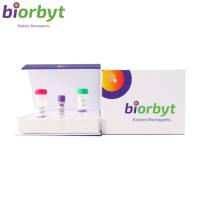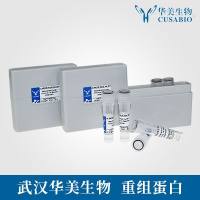Use of Spectral Fluorescence Resonance Energy Transfer to Detect Nitric Oxide‐Based Signaling Events in Isolated Perfused Lung
互联网
- Abstract
- Table of Contents
- Materials
- Figures
- Literature Cited
Abstract
Fluorescence resonance energy transfer (FRET) is a fluorescence microscopy technique suitable for live cells and capable of detecting changes in the conformational state of a single protein or the distance between two interacting proteins when the proteins are conjugated with appropriate donor and acceptor fluorophores. Confocal?based spectral detection systems enable the resolution of fluorescent images by providing full spectral information for each voxel of the image without switching of optical filters. Furthermore, using calibration spectra, it is possible to unambiguously separate the cross?talk between overlapping donor and acceptor emissions. This unit describes the use of confocal?based spectral imaging of nitric oxide (NO) sensitive FRET reporters in the vasculature of the intact, isolated perfused mouse lung. This type of in situ imaging approach allows the visualization and study of temporal molecular signaling events within the appropriate physiologic microenvironment of the intact, living organ. Curr. Protocol. Cytom. 45:12.13.1?12.13.12. © 2008 by John Wiley & Sons, Inc.
Keywords: nitric oxide; fluorescence resonance energy transfer; lung; confocal microscopy
Table of Contents
- Introduction
- Strategic Planning
- Basic Protocol 1: Isolating and Perfusing Mouse Lung
- Basic Protocol 2: No‐Induced Protein Modifications Detected by FRET Using Spectral Confocal Microscopy
- Reagents and Solutions
- Commentary
- Literature Cited
- Figures
Materials
Basic Protocol 1: Isolating and Perfusing Mouse Lung
Materials
Basic Protocol 2: No‐Induced Protein Modifications Detected by FRET Using Spectral Confocal Microscopy
Materials
|
Figures
-
Figure 12.13.1 Environmental chamber housing an isolated perfused mouse lung preparation. The 6 × 6 × 2–in. Plexiglas environmental chamber was custom designed and built in‐house to fit atop the Zeiss 510 META microscope stage. It contains a small heated water bath (small open tray with water and heating coil) that keeps the interior of the chamber humidified at 37°C. Ports at either end of the chamber allow access for the tracheal (top), pulmonary arterial (left), and atrial (right) cannulae. An additional port with tubing (top left of picture) allows control of the composition of the gases within the chamber using premixed gas tanks. View Image -
Figure 12.13.2 Nitric oxide (NO)–induced changes in FRET‐MT in intact pulmonary endothelium. Spectral laser scanning confocal imaging of small intra‐acinar arteries of the isolated perfused mouse lung showed that the addition of NO donor (500 µM DETA NONOate, left), or muscarinic agonist, activator of endothelial NO synthase (10 µM carbachol, right), to the perfusate caused an increase in the peak emission intensity of the donor (cyan, ∼485 nm) and a decrease in that of the acceptor (yellow, 525 nm) consistent with conformational changes in FRET‐MT. View Image -
Figure 12.13.3 Selective photobleaching of FRET‐MT reporter in isolated perfused mouse lung. Acceptor photobleaching confirmed that the FRET‐MT reporter was functional in the intact pulmonary endothelium of the isolated perfused mouse lung. The graph shows the spectral report provided by the Zeiss software. Following selective photobleaching of a small region of the vessel, the donor (cyan) was unquenched, resulting in an increase in the peak emission intensity (∼485 nm) indicative of positive fluorescence resonance energy transfer (FRET). This is illustrated in the images by a color change from green to blue. View Image -
Figure 12.13.4 Endothelial expression of FRET‐MT. Visualization was achieved via tail vein injection of DOTAP/cholesterol liposomes followed by adenovirus containing cDNA for FRET‐MT. Expression in the endothelium was confirmed by (A ) colocalization of FRET‐MT and PECAM (platelet/endothelial cell adhesion molecule) in fixed tissue and (B ) perfusion of the isolated lung preparation with Cy3‐labeled albumin to visualize the pulmonary vascular network. View Image
Videos
Literature Cited
| Literature Cited | |
| Al‐Mehdi, A.B., Zhao, G., Dodia, C., Tozawa, K., Costa, K., Muzykantov, V., Ross, C., Blecha, F., Dinauer, M., and Fisher, A.B. 1998a. Endothelial NADPH oxidase as the source of oxidants in lungs exposed to ischemia or high K+. Circ. Res. 83:730‐737. | |
| Al‐Mehdi, A.B., Zhao, G., and Fisher, A.B. 1998b. ATP‐independent membrane depolarization with ischemia in the oxygen‐ventilated isolated rat lung. Am. J. Respir. Cell. Mol. Biol. 18:653‐661. | |
| Bai, C., Fukuda, N., Song, Y., Ma T, Matthay, M.A., and Verkman, A.S. 1999. Lung fluid transport in aquaporin‐1 and aquaporin‐4 knockout mice. J. Clin. Invest. 103:555‐561. | |
| Carter, E.P., Matthay, M.A., Farinas, J., and Verkman, A.S. 1996. Transalveolar osmotic and diffusional water permeability in intact mouse lung measured by a novel surface fluorescence method. J. Gen. Physiol 108:133‐142. | |
| Carter, E.P., Olveczky, B.P., Matthay, M.A., and Verkman, A.S. 1998. High microvascular endothelial water permeability in mouse lung measured by a pleural surface fluorescence method. Biophys. J. 74:2121‐2128. | |
| Chang, S.‐W. and Voelkel, N.F. 1992. The isolated perfused lung preparation as a research tool. In Treatise on Pulmonary Toxicology, Vol 1 (R.A. Parent, ed.) pp. 587‐613. CRC Press, Boca Raton, Fla. | |
| Donovan, J. and Brown, P. 1998. Anesthesia. Curr. Protoc. Immunol. 27:1.4.1‐1.4.5. | |
| Donovan, J. and Brown, P. 2006. Handling and restraint. Curr. Protoc. Immunol. 73:1.3.1‐1.3.6. | |
| Honda, A., Adams, S.R., Sawyer, C.L., Lev‐Ram, V., Tsien, R.Y., and Dostmann, W.R. 2001. Spatiotemporal dynamics of guanosine 3′,5′‐cyclic monophosphate revealed by a genetically encoded, fluorescent indicator. Proc. Natl. Acad. Sci. U.S.A. 98:2437‐2442. | |
| Jaryszak, E.M., Baumgartner, W.A.Jr., Peterson, A.J., Presson, R.G.Jr, Glenny, R.W., and Wagner, W.W.Jr. 2000. Selected contribution: Measuring the response time of pulmonary capillary recruitment to sudden flow changes. J. Appl. Physiol. 89:1233‐1238. | |
| Karpova, T.S., Baumann, C.T., He, L., Wu, X., Grammer, A., Lipsky, P., Hager, G.L., and McNally, J.G. 2003. Fluorescence resonance energy transfer from cyan to yellow fluorescent protein detected by acceptor photobleaching using confocal microscopy and a single laser. J. Microsc. 209:56‐70. | |
| Kuebler, W.M., Ying, X., and Bhattacharya, J. 2002. Pressure‐induced endothelial Ca2+ oscillations in lung capillaries. Am. J. Physiol. Lung Cell. Mol. Physiol. 282:L917‐923. | |
| Ma, Z., Mi, Z., Wilson, A., Alber, S., Robbins, P.D., Watkins, S., Pitt, B., and Li, S. 2002a. Redirecting adenovirus to pulmonary endothelium by cationic liposomes. Gene Ther. 9:176‐182. | |
| Ma, Z., Zhang, J., Alber, S., Dileo, J., Negishi. Y., Stolz, D., Watkins, S., Huang, L., Pitt, B., and Li, S. 2002b. Lipid‐mediated delivery of oligonucleotide to pulmonary endothelium. Am. J. Respir. Cell Mol. Biol. 27:151‐159. | |
| Miyawaki, A., Llopis, J., Heim, R., McCaffery, J.M., Adams, J.A., Ikura, M., and Tsien, R.Y. 1997. Fluorescent indicators for Ca2+ based on green fluorescent proteins and calmodulin. Nature 388:882‐887. | |
| Pearce, L.L., Gandley, R.E., Han, W., Wasserloos, K., Stitt, M., Kanai, A.J., McLaughlin, M.K., Pitt, B.R., and Levitan, E.S. 2000. Role of metallothionein in nitric oxide signaling as revealed by a green fluorescent fusion protein. Proc. Natl. Acad. Sci. U.S.A. 97:477‐482. | |
| Piston, D.W. and Kremers, G.J. 2007. Fluorescent protein FRET: The good, the bad and the ugly. Trends Biochem Sci. 32:407‐414. | |
| St. Croix, C.M., Wasserloos, K.J., Dineley, K.E., Reynolds, I.J., Levitan, E.S., and Pitt, B.R. 2002. Nitric oxide‐induced changes in intracellular zinc homeostasis are mediated by metallothionein/thionein. Am. J. Physiol. Lung Cell. Mol. Physiol. 282:L185‐192. | |
| St. Croix, C.M., Stitt, M.S., Leelavanichkul, K, Wasserloos, K.J., Pitt, B.R., and Watkins, S.C. 2004. Nitric oxide‐induced modification of protein thiolate clusters as determined by spectral fluorescence resonance energy transfer in live endothelial cells. Free Radic. Biol. Med. 37:785‐792. | |
| St. Croix, C.M., Pitt, B.R., and Watkins, S.C. 2005. The use of contemporary fluorescent imaging technologies in biomedical research. Med. Sci. 10:16‐29. | |
| Ting, A.Y., Kain, K.H., Klemke, R.L., and Tsien, R.Y. 2001. Genetically encoded fluorescent reporters of protein tyrosine kinase activities in living cells. Proc. Natl. Acad. Sci. U.S.A. 98:15003‐15008. | |
| Tozawa, K., al‐Mehdi, A.B., Muzykantov, V., and Fisher, A.B. 1999. In situ imaging of intracellular calcium with ischemia in lung subpleural microvascular endothelial cells. Antioxid. Redox. Signal. 1:145‐154. | |
| Wagner, W.W.Jr., Latham, L.P., Hanson, W.L., Hofmeister, S.E., and Capen, R.L. 1986. Vertical gradient of pulmonary capillary transit times. J. Appl. Physiol. 61:1270‐1274. | |
| Ying, X., Minamiya, Y., Fu, C., and Bhattacharya, J. 1996. Ca2+ waves in lung capillary endothelium. Circ. Res. 79:898‐908. | |
| Zaccolo, M., Cesetti, T., Di Benedetto, G., Mongillo, M., Lissandron, V., Terrin, A., and Zamparo, I. 2005. Imaging the cAMP‐dependent signal transduction pathway. Biochem. Soc. Trans. 33:1323‐1326. |









